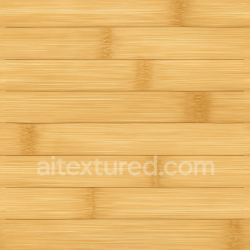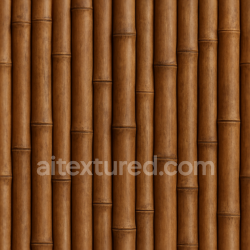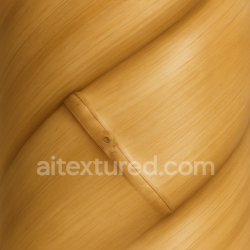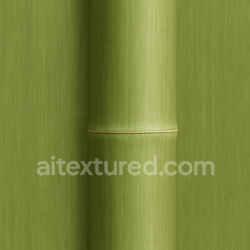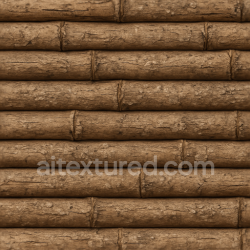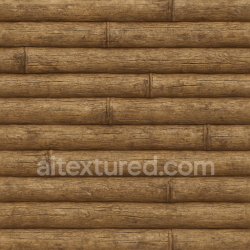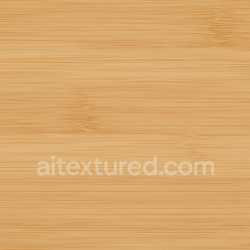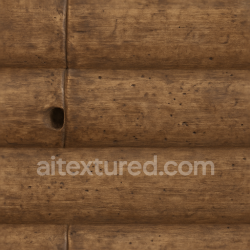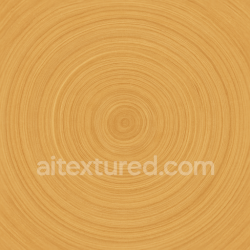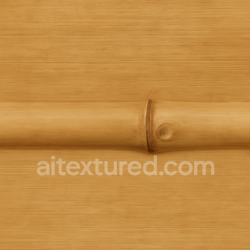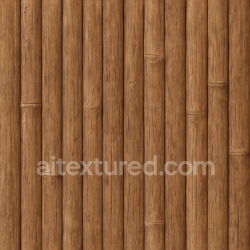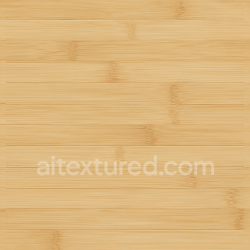Realistic Seamless PBR Furniture Plastic Textures for 3D Artists
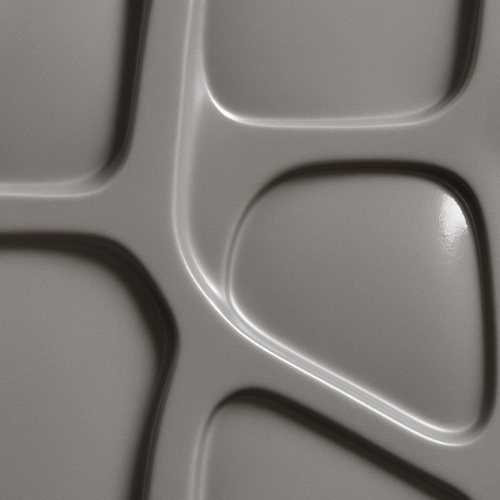
Capturing high-fidelity texture data for furniture plastics in physically based rendering (PBR) workflows demands a meticulous approach to acquisition, given the inherently challenging properties of plastic materials. Unlike porous or highly textured surfaces such as wood or stone, plastic—especially in furniture applications—often features smooth yet subtly varied surfaces characterized by low-frequency micro-variations, faint gloss, and occasional surface imperfections like fine scratches or manufacturing marks. The primary goal during acquisition is to accurately record not only the albedo or base color but also the complementary texture maps—roughness, normal, ambient occlusion (AO), height, and occasionally metallic—ensuring these maps faithfully represent the material’s optical and tactile qualities while maintaining tileability and engine compatibility.
The foundational step in acquiring furniture plastic textures is preparing the physical sample for scanning or photogrammetric capture. Given that many plastic surfaces are semi-glossy or have slight reflections, surface preparation is critical to mitigate specular highlights that can confound data acquisition. Typically, a thin, removable matte spray (such as a temporary anti-reflective coating) is applied to the sample. This coating reduces unwanted reflections without obscuring fine surface detail, allowing for more accurate scans and photographs. It is essential to ensure the spray is minimal and evenly applied because excessive coating can blur micro-details or alter the perceived color slightly, complicating later calibration. Samples must be cleaned of dust and oils before coating, as contaminants can result in artifacts or inconsistent readings. Some practitioners prefer to avoid sprays altogether by adopting specialized lighting arrangements, but this often necessitates more advanced equipment and intricate workflows.
Photogrammetry remains a widely used technique for capturing furniture plastic textures due to its relative accessibility and high resolution potential. However, the reflective nature of plastic surfaces introduces unique challenges. To counteract this, multi-view image acquisition is performed under controlled lighting conditions that minimize specular highlights. Using diffuse dome lighting or carefully positioned softboxes helps produce consistent, even illumination and reduces gloss-induced hot spots. The camera setup typically involves a high-resolution DSLR or mirrorless camera with a macro lens to capture subtle surface detail. Maintaining consistent exposure and white balance throughout the shoot is crucial for accurate color data, which directly influences the albedo map’s fidelity.
During photogrammetry, capturing the surface from a dense array of angles facilitates the reconstruction of geometry and normal maps. However, the smoothness of plastic surfaces means the geometry is often low in high-frequency detail, necessitating the use of supplemental techniques for micro-variation capture. To this end, photogrammetry can be augmented with focus stacking to extend depth of field and improve detail clarity. Additionally, capturing images with cross-polarized filters on both the camera and light sources can help isolate diffuse color information by filtering out specular reflections. This approach improves the accuracy of the albedo texture by removing gloss-induced color shifts, which can otherwise mislead shader inputs.
Complementing photogrammetry, structured light 3D scanning or laser scanning can be employed to capture precise surface geometry for normal and height map extraction. Structured light scanners project known light patterns onto the surface and analyze deformations to reconstruct surface topology with sub-millimeter accuracy. This method excels at picking up subtle surface imperfections such as injection molding marks, micro-scratches, and textural micro-variation that are critical for realistic roughness and normal map generation in furniture plastics. However, reflective surfaces can introduce noise in the scans, requiring multiple scans from different angles and careful post-processing to remove artifacts. When scanning, it is advisable to maintain a stable, vibration-free environment and calibrate the scanner meticulously to the sample’s scale and reflectance characteristics.
Calibration between captured data and the final PBR texture set is a vital step that often goes underestimated. After acquisition, raw data must be processed to extract the individual maps required for PBR workflows. Albedo maps must be corrected for any residual specular contamination and color shifts introduced by lighting or coatings. Tools such as Substance Designer or Quixel Mixer can be used to refine and tile the textures, ensuring seamlessness without visible repetition artifacts. The roughness map is particularly crucial for furniture plastics, where subtle gloss variations define perceived material quality. Roughness data can be derived from reflectance variance observed during acquisition or inferred from normal map detail intensity, but often requires manual tuning informed by reference material samples and physical observation.
Normal maps are generated from either photogrammetric mesh normals or high-resolution scan data. Due to the relatively low contrast of plastic micro-geometry, enhancing normal detail via procedural noise or micro-bump maps can improve realism and reduce flatness in the final render. Ambient occlusion maps, while less pronounced on smooth plastic, still contribute to depth perception in crevices and surface indentations. AO is typically baked from high-poly meshes or approximated through curvature and cavity maps. Height maps derived from scanning data can be used for parallax occlusion mapping or displacement in real-time engines, adding convincing surface relief without heavy geometry.
Tiling is a critical consideration in furniture plastic textures to accommodate large surface areas such as chair seats or cabinet panels. Achieving seamless tiling in PBR maps requires careful alignment and blending of edge details. Acquisition workflows must account for this by capturing large enough sample areas or multiple overlapping captures to enable stitching. Micro-variation in patterns—such as faint grain, speckling, or slight color mottling—is essential to avoid unnatural flatness when textures repeat. These micro-variations can be captured directly or introduced procedurally during authoring, but the acquisition stage should prioritize capturing authentic, subtle irregularities.
Engine-specific optimization is another factor influencing acquisition decisions. For instance, Unreal Engine favors efficient use of texture channels and compressed formats, encouraging authors to pack roughness and metallic data into single channels when possible. Although furniture plastics are generally non-metallic, certain finishes may include metallic flakes or conductive coatings, necessitating an accurate metallic map. Blender, with its flexible shader editor, allows for more experimental use of acquired maps but benefits equally from well-calibrated, tileable inputs. Understanding engine constraints guides the resolution and bit-depth of captured data to balance quality and performance.
In practical terms, acquiring furniture plastic textures is an iterative process involving continuous feedback between physical sample observation, capture methodology, and digital texture refinement. Employing color calibration targets during photography ensures consistent albedo reproduction, while gray cards and exposure bracketing help manage dynamic range and reflectance variability. Post-capture, normal and height maps require careful filtering to remove noise without erasing subtle details. When acquiring multiple samples for a material library, maintaining consistent acquisition parameters aids in producing comparable texture sets that integrate seamlessly in larger scenes.
Ultimately, the acquisition of furniture plastic texture data is a nuanced process that must reconcile the material’s reflective subtleties, low-frequency surface features, and practical production constraints. By combining controlled photogrammetry, advanced 3D scanning, careful physical sample preparation, and rigorous calibration, artists and technical directors can generate rich, physically accurate PBR textures. These textures not only replicate the visual complexity of plastic furniture surfaces but also integrate efficiently into real-time and offline rendering pipelines, ensuring a faithful material representation across diverse virtual environments.
The creation of high-fidelity plastic PBR textures often hinges on the deliberate choice between procedural generation and photographic capture, or an informed hybrid of both. Each approach offers distinct advantages and challenges in replicating the diverse range of plastic finishes encountered in furniture design—from ultra-smooth, glossy laminates to subtly textured injection-molded surfaces or embossed details. Mastery of these methods requires a nuanced understanding of not only the visual characteristics of plastic but also the technical demands of PBR workflows and real-time rendering engines such as Unreal Engine and Blender’s Eevee or Cycles.
Procedural texture authoring for furniture plastics typically begins with the formulation of base color (albedo) maps that reflect the inherent pigmentation and translucency of the material. Unlike organic materials, plastics usually exhibit uniform coloration with minimal subsurface scattering, allowing base colors to be generated by combining color ramps with noise functions that simulate microscopic pigment distribution or slight tint variations. Node-based tools like Substance Designer excel here, enabling the synthesis of smooth gradients or subtly mottled patterns without relying on photographic input. Procedural roughness maps are crucial in defining the surface’s reflectance behavior. For instance, a high-gloss vinyl might require a roughness value skewed toward near-zero with minor noise to avoid a perfectly mirror-like finish, while a matte polypropylene chair surface would demand higher roughness values with anisotropic noise to mimic microstructure. These roughness variations can be layered procedurally by blending fractal noises, cellular patterns, or directional noise nodes to simulate the wear and production inconsistencies characteristic of plastics.
Normal and height maps in procedural workflows are often generated through the interpretation of noise patterns or mathematically defined shapes to replicate surface details such as injection molding marks, subtle embossing, or injection gate scars. Height maps can be derived from grayscale noise functions or combined with procedural curvature maps to emulate wear at edges or raised logos. Careful calibration is essential: the displacement or normal intensity must remain within realistic bounds to prevent exaggerated surface deformation that breaks immersion. These maps should tile seamlessly to avoid repetition artifacts, a task eased by procedural noise that inherently supports infinite tiling or can be masked to transition smoothly. Ambient occlusion (AO) maps, while often baked from geometry, can be approximated procedurally by simulating cavity and curvature effects through curvature node setups combined with ambient occlusion generators within the node graph. This approach allows for finer control over AO intensity and spatial distribution, especially important when plastic parts feature crevices or embossed patterns.
Photographic texture authoring, conversely, starts with high-resolution image captures of real plastic surfaces under controlled lighting conditions. A calibrated HDRI setup ensures consistent lighting and accurate color rendition, critical for generating physically accurate albedo maps. When capturing plastic furniture samples, diffuse reflection dominates, but specular highlights must be carefully managed or removed during post-processing to isolate the base color. Photogrammetric methods or macro photography can provide detailed normal and height data through height field extraction or normal map baking workflows. Photographic roughness maps are typically derived by analyzing specular reflections and glossiness captured in the images or through dedicated roughness capture methods like specular albedo separation. Photographic AO is often baked from geometry in conjunction with photos but can also be enhanced using software tools to improve shadow definition in micro-details.
One of the key challenges in photographic workflows is ensuring seamless tiling, particularly for plastic surfaces that often display subtle repetitive patterns such as grain or texture embossing. Techniques such as edge blending, clone stamping in Photoshop, or using specialized tools like Substance Alchemist’s seamless tiling generators become invaluable. Additionally, photographic textures inherently carry micro-variation and noise that contribute significantly to realism—microscopic scratches, dust accumulation, or slight discolorations that procedural noise alone struggles to replicate convincingly.
Blending procedural and photographic elements leverages the strengths of both methodologies to achieve optimal realism and practical flexibility. A common strategy involves using photographic albedo and normal maps as the foundational layer, then overlaying procedural noise or curvature-based masks to introduce micro-variation in roughness or height maps. This approach mitigates the overly uniform appearance that pure photographic textures sometimes exhibit, especially under dynamic lighting in engines like Unreal Engine where physically based shading models accentuate surface imperfections. Procedural masks can also add wear patterns such as edge fading or smudges, generated from curvature or ambient occlusion maps, which can be composited with photographic base maps using blend nodes or layer masks.
In terms of software pipeline, Substance Designer’s node-based architecture facilitates this hybrid workflow with ease. Photographic inputs can be imported and processed through various filter nodes (e.g., histogram range, levels, blur) before merging with procedural outputs. For example, a photographic albedo map can be combined with a procedural roughness mask created from fractal noise to simulate dirt accumulation or usage wear. Normal maps extracted from photo sources can be enhanced by blending them with procedurally generated embossing patterns, ensuring the final normal map carries both macro and micro surface details. Calibration between these inputs is critical: albedo values must remain within a physically plausible range to avoid energy conservation issues, and roughness must scale appropriately to the material’s glossiness under engine lighting.
Optimization considerations are paramount when authoring plastic PBR textures, given the prevalence of plastic materials in furniture assets across real-time projects. Tiling textures should be kept at appropriate resolutions (typically 1k or 2k for close-up furniture parts) and packed efficiently—roughness, metallic, and AO channels are often combined into one texture to reduce shader fetches. Procedural elements provide an advantage here by allowing infinite detail generation without large texture sizes, but their complexity must be balanced against performance constraints. Baking procedural maps into texture sets before export to engines like Unreal Engine ensures consistent rendering performance and predictable lighting responses.
When importing these textures into Blender or Unreal Engine, attention must be paid to the correct interpretation of channels and color spaces. Albedo textures should be set to sRGB space, while roughness, metallic, normal, height, and AO maps require linear color space to maintain the physical accuracy of shading calculations. In Unreal Engine, material instances can be created to dynamically adjust roughness or normal intensity, enabling artists to fine-tune plastic finishes interactively. Blender’s principled BSDF shader node is well-suited to plastic materials, with roughness and normal inputs driving the microfacet specular reflections central to the material’s look.
In conclusion, procedural and photographic authoring methods each contribute vital capabilities to the production of convincing furniture plastic PBR textures. Procedural techniques afford unparalleled control over surface micro-variations, seamless tiling, and parametric customization, while photographic inputs provide the nuanced complexity of real-world materials. The most effective workflows integrate both, using procedural masks and noise to enhance photographic bases, calibrated within physically based constraints to ensure accurate rendering across engines. This combined approach enables the creation of plastic surfaces that convincingly capture the subtle interplay of color, roughness, and microstructure intrinsic to plastic furniture finishes in modern PBR pipelines.
Creating physically based rendering (PBR) textures for furniture-grade plastic materials demands careful attention to the unique optical and tactile properties inherent to these surfaces. Unlike metals or natural materials, plastics used in furniture often exhibit a blend of semi-glossy finishes, subtle micro-roughness, and engineered durability traits such as anti-scratch coatings and impact resistance layers. To accurately represent these nuances in a PBR workflow, it is essential to generate and calibrate a comprehensive set of texture maps—including albedo (base color), roughness, metallic, normal, ambient occlusion (AO), and, where applicable, height maps—that collectively simulate the material’s visual and tactile behavior under diverse lighting conditions.
The albedo map for furniture plastic should capture the intrinsic diffuse color without baked-in lighting or shadow details. Plastics typically have a relatively uniform color distribution, but subtle color shifts can arise from pigment dispersion or surface treatment. When authoring the albedo, it is critical to avoid incorporating any specular highlights or reflections, as these are physically simulated through roughness and normal maps. For plastic, albedo values often fall into mid to low saturation ranges with moderate brightness; overly saturated or too dark albedo can lead to unrealistic plasticiness or dullness, respectively. Utilizing calibrated color workflows—such as working in linear color space and referencing standard sRGB color profiles—helps maintain consistency across different software and rendering engines. When acquiring albedo data, high-resolution photography under diffuse lighting is ideal, but when unavailable, procedural generation with subtle noise overlays can simulate micro-pigmentation variations common in molded plastics.
The roughness map is paramount for replicating the surface finish of furniture plastic. Plastic surfaces range from matte, finely textured finishes to semi-gloss coatings with a slight sheen. Importantly, roughness values must be physically plausible, typically within a 0.3 to 0.7 range for furniture plastics depending on the finish. To simulate anti-scratch coatings, roughness maps should incorporate localized micro-variations that emulate the subtle increase in smoothness where coatings are applied, contrasting with the base plastic’s micro-roughness. This can be achieved by layering procedural noise with varying frequency bands and blending masks that define coated versus uncoated regions. For impact resistance, slight roughness gradients or micro-indentations can be simulated with height or normal map variations that alter the microsurface topology, subtly influencing roughness perception. It is advisable to calibrate roughness values by comparing rendered results against real-world reference materials under standardized lighting setups, such as a neutral gray sphere with a plastic finish photographed under controlled HDRI lighting.
The metallic map for furniture plastic is generally straightforward, as plastics are non-metallic by nature. The metallic channel should be kept at zero (black) across the entire texture unless simulating hybrid materials or embedded metallic elements, which is uncommon for standard furniture plastics. Using a metallic value greater than zero can lead to incorrect specular reflections and energy conservation violations in the PBR pipeline. If the rendering engine supports it, the metallic map can be omitted entirely or set to a constant zero value for plastic materials.
Normal maps are crucial for introducing the fine surface details that characterize plastic materials, such as the subtle tooling marks from injection molding or the textured grain from anti-slip coatings. Unlike natural materials where large-scale height variations dominate, furniture plastics often rely on micro-normal variations to break up reflections and avoid overly smooth, synthetic appearances. Generating normal maps can involve a combination of high-resolution sculpting and procedural noise textures, carefully blended to avoid repetitive tiling artifacts. When authoring normal maps, it is important to ensure that the tangent space conforms to the target engine’s conventions (e.g., DirectX versus OpenGL normal map orientations) to avoid inverted shading. For engines like Unreal Engine and Blender, correct normal map calibration includes verifying the green channel inversion and ensuring mipmaps are generated to preserve detail at varying distances. Additionally, normal maps should be authored at a resolution and bit-depth that balance detail fidelity with performance constraints; usually, 4K maps are sufficient for close-up renders, while 2K or 1K can be used for less prominent assets.
Ambient occlusion (AO) maps serve to simulate the attenuation of ambient light in crevices and recessed areas, enhancing perceived depth and volume. For furniture plastics, AO is subtle but important for reinforcing the perception of slight surface imperfections and seams, such as the joints between molded parts or screw holes. Since plastic surfaces are generally smooth, AO maps should be softly graded rather than harshly contrasted. Baking AO using high-poly mesh geometry in software like Blender’s Cycles or Unreal Engine’s built-in tools is effective, but care must be taken to avoid over-darkening that can obscure the material’s diffuse reflection. In real-time engines, AO maps are often combined multiplicatively with the albedo or integrated into ambient lighting calculations, so calibration against real-world plastic samples under indirect lighting is advised to maintain physical plausibility.
Height maps, while not always mandatory for furniture plastic, can enhance realism by providing subtle parallax effects or micro-displacement for tooling marks and surface texture variations. When used, height maps should encode very fine-scale height differences, typically in the range of a few microns to millimeters, since furniture plastics rarely exhibit large-scale relief. In engines like Unreal, height maps can be used in tessellation or parallax occlusion mapping to augment the normal map’s illusion of depth, but overuse can cause aliasing or performance penalties. Therefore, height maps for plastics are best optimized by limiting their resolution and amplitude, and by blending them carefully with normal maps to maintain consistent surface features.
Tiling and micro-variation are critical considerations for furniture plastic materials. Due to the often large surface areas covered by plastic components, seamless tiling is necessary to avoid visible repetition. This can be achieved through a combination of carefully authored tileable textures and the introduction of randomized micro-variation via detail maps or vertex color masks. Procedural noise overlays that simulate subtle pigment dispersion, manufacturing inconsistencies, or wear patterns add authenticity. For example, micro-scratches or slight surface roughness variations can be layered in detail normal and roughness maps at a higher frequency than the base tile, effectively breaking up pattern repetition in close-up views.
Calibration of these maps is essential to maintain physical accuracy and consistency across different lighting environments. This involves iterative testing of the material under both direct and indirect lighting, HDR environment maps, and varying angles of incidence to ensure energy conservation and realistic reflectance behavior. Using standard reference materials, such as a plastic color checker or standardized plastic samples with known BRDF measurements, can guide adjustments to roughness and albedo. Additionally, leveraging tools like Unreal Engine’s Material Editor or Blender’s Principled BSDF shader allows for real-time preview and fine-tuning of PBR parameters. To achieve cross-engine consistency, it is advisable to export textures in linear color space with appropriate gamma correction and to adhere to engine-specific texture compression workflows, preserving detail without introducing artifacts.
Optimization is another important aspect, especially for real-time applications. Furniture plastic PBR textures benefit from mipmapping and anisotropic filtering to maintain sharpness at oblique angles while reducing aliasing. Compression formats should be chosen to balance quality and memory footprint; for instance, BC7 or ASTC are preferred over BC1/DXT1 due to better handling of smooth gradients and subtle color variations. When targeting Blender’s Eevee or Unreal Engine, consider baking combined maps or pre-multiplying AO into ambient lighting to reduce shader complexity. Furthermore, organizing texture sets to reuse common detail maps across multiple assets can reduce redundancy and improve performance.
In summary, accurately recreating furniture plastic materials with PBR textures hinges on a nuanced understanding of plastic-specific optical properties and manufacturing characteristics. The albedo must faithfully represent base color without baked lighting, roughness maps require micro-variation to simulate coatings and wear, metallic maps remain null, and normal and AO maps provide essential surface detail and ambient shading cues. Height maps can augment depth subtly, while tiling and micro-variation strategies prevent pattern repetition. Rigorous calibration against physical references and iterative testing across rendering engines ensure consistency and realism, while optimization techniques maintain performance without sacrificing fidelity. Mastery of these elements within the PBR workflow empowers artists and technical directors to produce convincing furniture plastic materials that hold up under varied lighting scenarios and close inspection.
